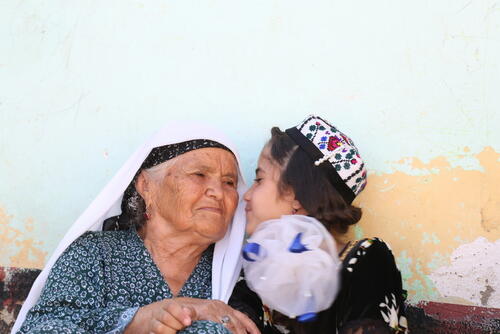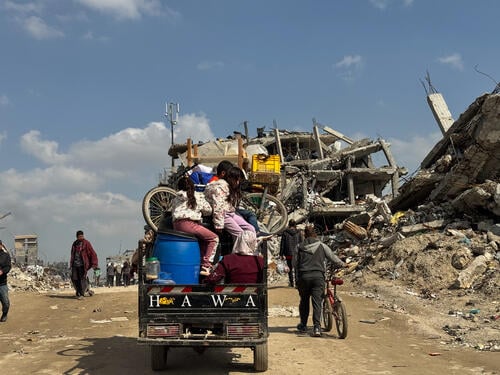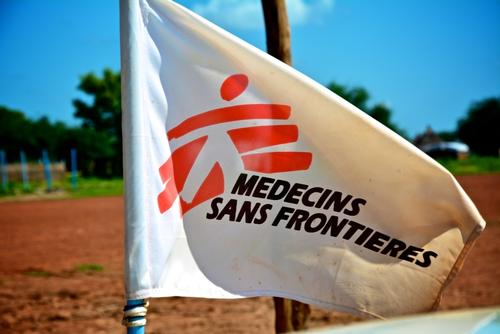The Tajik Ministry of Health and Médecins Sans Frontières (MSF) began a comprehensive paediatric tuberculosis (TB) care programme in 2011. The paediatric TB project in Dushanbe aims to decrease the TB morbidity and mortality rates among children and their family members. In 2013, MSF documented this, producing a report about improving paediatric TB care.
Following the progress made in treating paediatric TB in Tajikistan, MSF produced a follow-up report titled Breaking the cycle: Paediatric DR-TB detection, care and treatment in Tajikistan. This new report documents the progress made during the last five years, and reflects on the sustainability of the programme and the challenges and opportunities that lie ahead.
Executive Summary
Tajikistan has one of the highest burdens of multidrug-resistant (MDR) tuberculosis (TB) in the world, according to the World Health Organization (WHO). Despite its ranking, alongside a number of countries in the region, there were only 743 reported incident cases of MDR-TB with 46 cases in children under 15-years-old in 2016. This is not unusual as global data is scant, incidence and prevalence typically underestimated and country reports lack accuracy, meaning the global burden of paediatric TB is poorly defined. Yet children aged under 15 years are particularly vulnerable to tuberculosis (TB) and those under five years are a key at-risk group.
Paediatric TB is not ignored in Tajikistan: in practice there has been a commitment to tackle the disease for a number of years. The Ministry of Health and Social Protection of the Population (MoH) and partners have been developing strategies and taking action to advance detection and treatment for this high-risk but neglected group. Incremental improvements in policy and practice are steadily charting a path towards an effective strategy for paediatric TB prevention and control in the country.
A successful partnership
Finding, diagnosing and treating paediatric TB remains a clinical and operational challenge, and a particularly urgent one in the case of MDR-TB. Médecins Sans Frontières/Doctors Without Borders (MSF) has successfully collaborated with the MoH in detecting and treating paediatric TB, with the number of patients admitted to the project increasing since 2013.
The programme employs international best practices and innovations to provide the best possible chance of a cure to patients. A key strength of this partnership has been the collaboration between the Republican Centre for Protection of Population from Tuberculosis national TB programme’s (NTP) Consilium, the over-arching clinical decision-making body and MSF clinicians. In collaboration with MSF, NTP and Consilium have reviewed, monitored, approved and passed a raft of measures including active case finding, sputum induction, child-friendly formulations, new drugs and shorter regimens, enhanced infection control and holistic, patient-centred models of care.
These advancements have generated significant momentum and are beginning to show true beneficial outcomes for patients. Across the Central Asia region, Tajikistan is in the vanguard of some developments but still has more work to do on others. Nevertheless, each progression enables the MoH and MSF to gain more experience of what works. As the programme gathers practice-based evidence, it contributes to the body of knowledge on paediatric MDR-TB across the region and globally.
Objective and intended audience
The primary objective of this report is to continue to share the partnership’s empirical experience with others in the region, and to drive the agenda forward in this often neglected but vital area of TB prevention and control. Through this report, and with the support of MSF, the Tajikistan MoH seeks to take a leadership role, positively influencing others committed to attaining the goals of the End TB Strategy (1). The report therefore is intended for:
- National MoH NTP and other national stakeholders – to document and showcase progress of paediatric TB detection, diagnosis and care in Tajikistan. Focusing on MoH/MSF areas of operation, there is reflection on sustainability, the challenges of the approaches, and discussion of the future if momentum on addressing paediatric TB is to be maintained.
- National TB programmes in the Eastern Europe and Central Asia region and beyond – to highlight best practice and innovations from case finding to drug regimens, and to demonstrate feasibility of findings, treating and caring for paediatric TB patients. Hopefully a demonstration of what’s possible in Tajikistan may encourage adaptation and adoption by those countries in the region where such steps have yet to be taken.
- International stakeholders – to advocate for continued interest and innovation, support and commitment by technical and funding partners. Innovation, widespread implementation and scaling up detection, diagnostics and treatment for childhood TB are championed by the international community as essential to achieving the End TB and Sustainable Development Goals. Countries cannot do this alone and continue to require strong partnerships and support to help meet their commitments.






